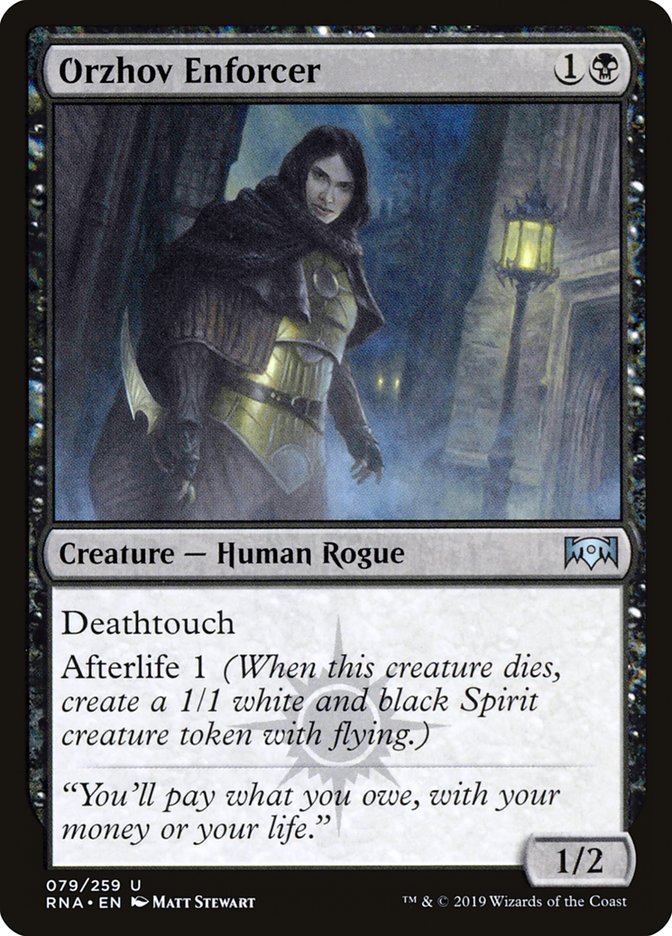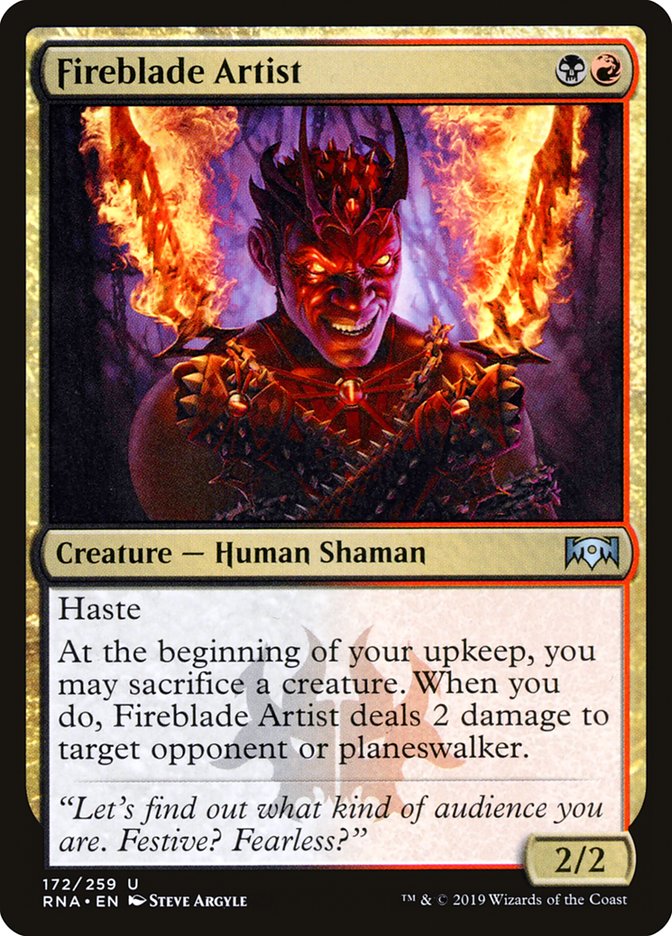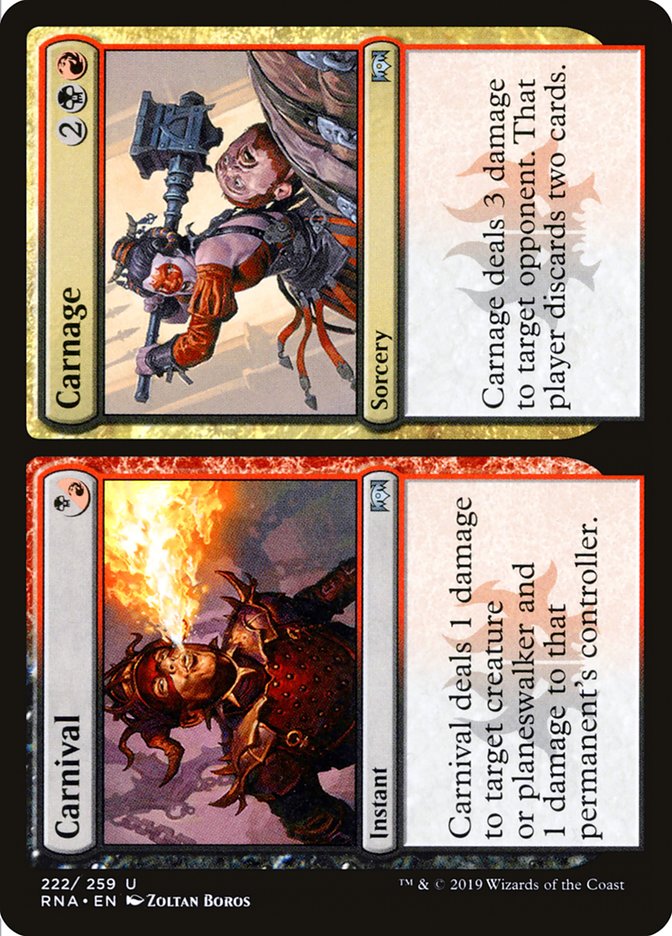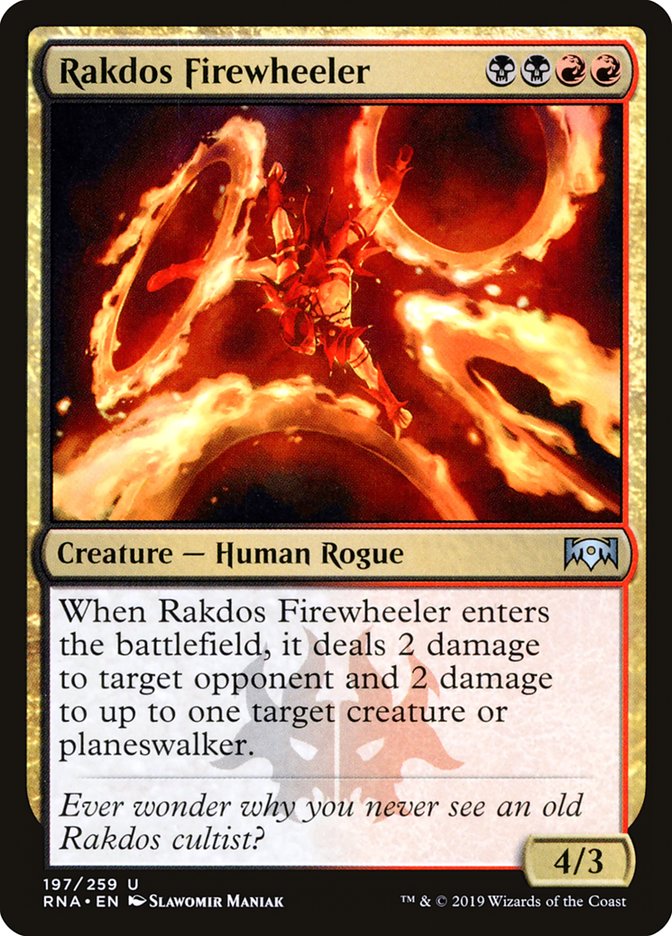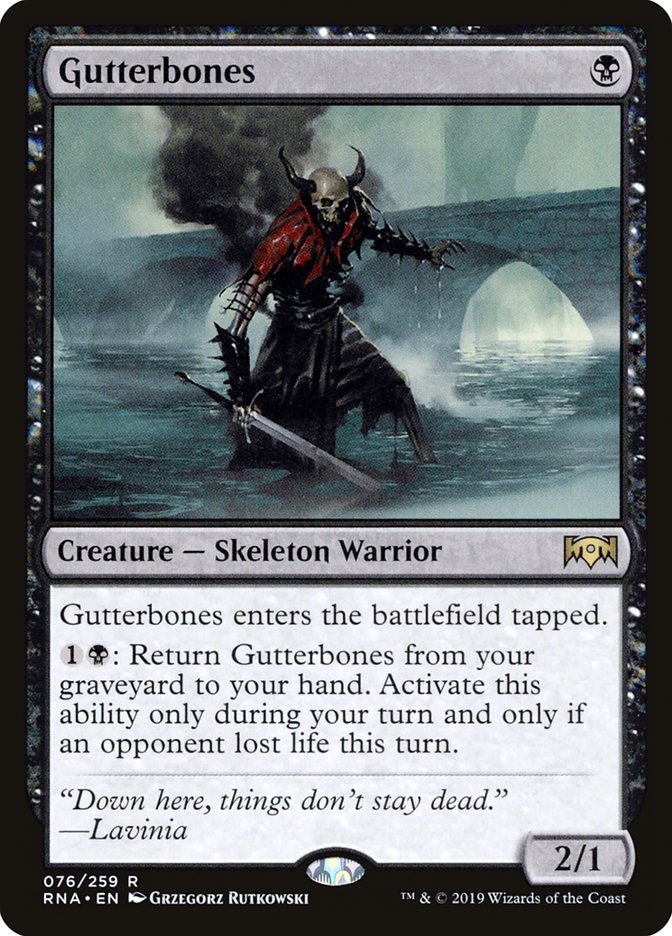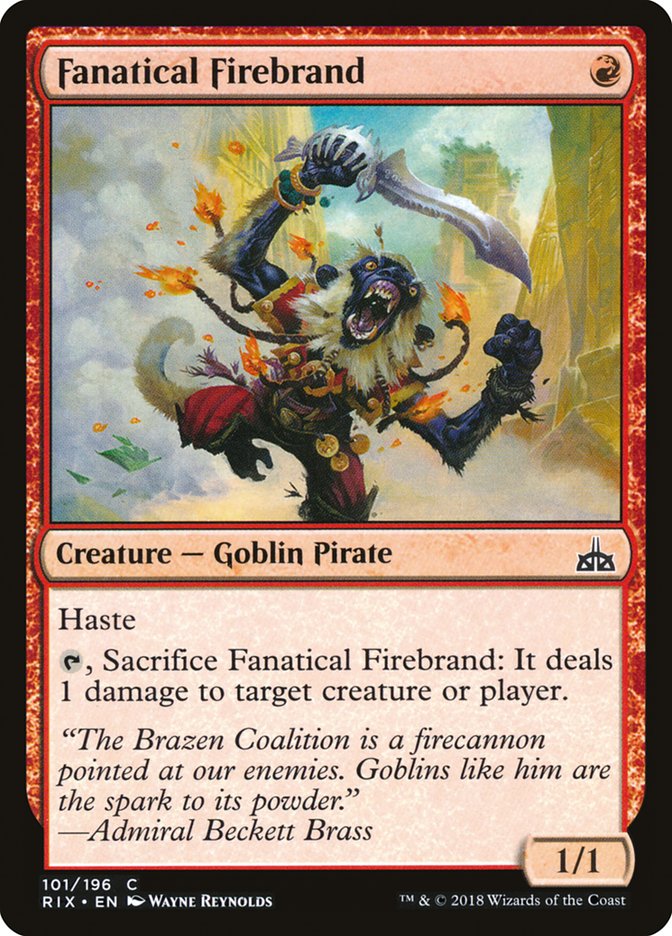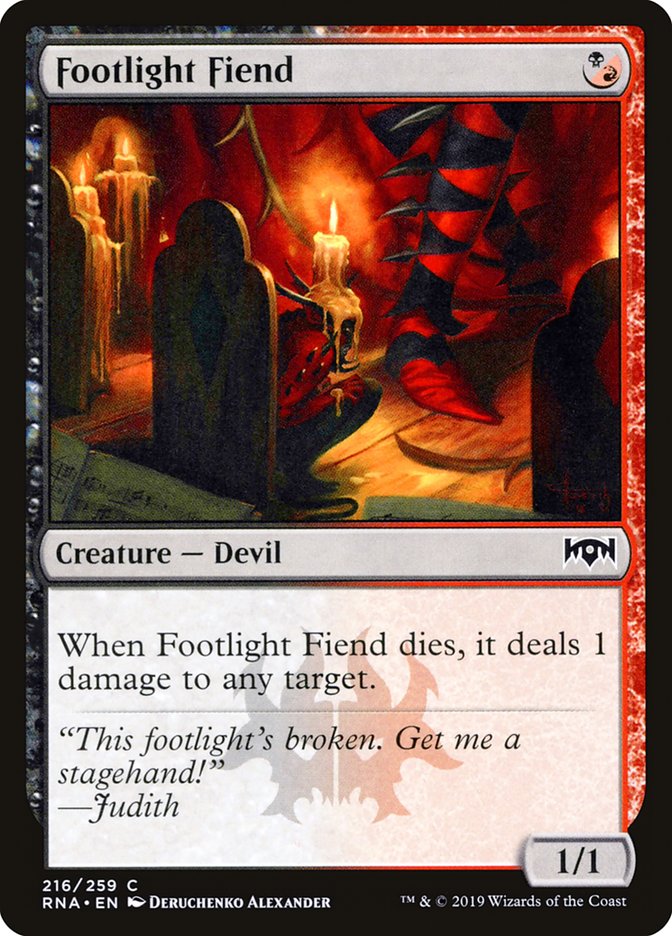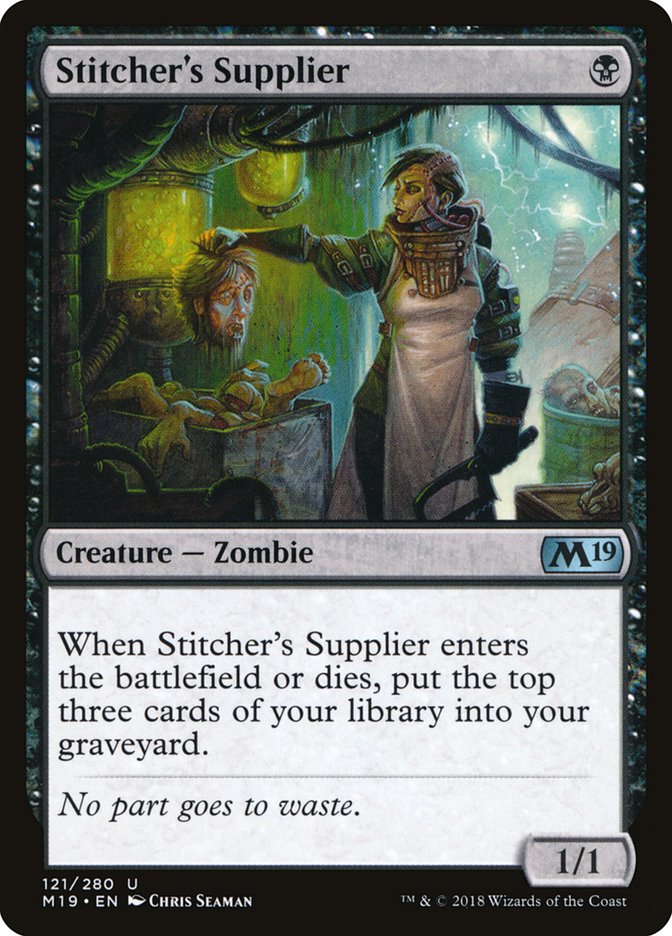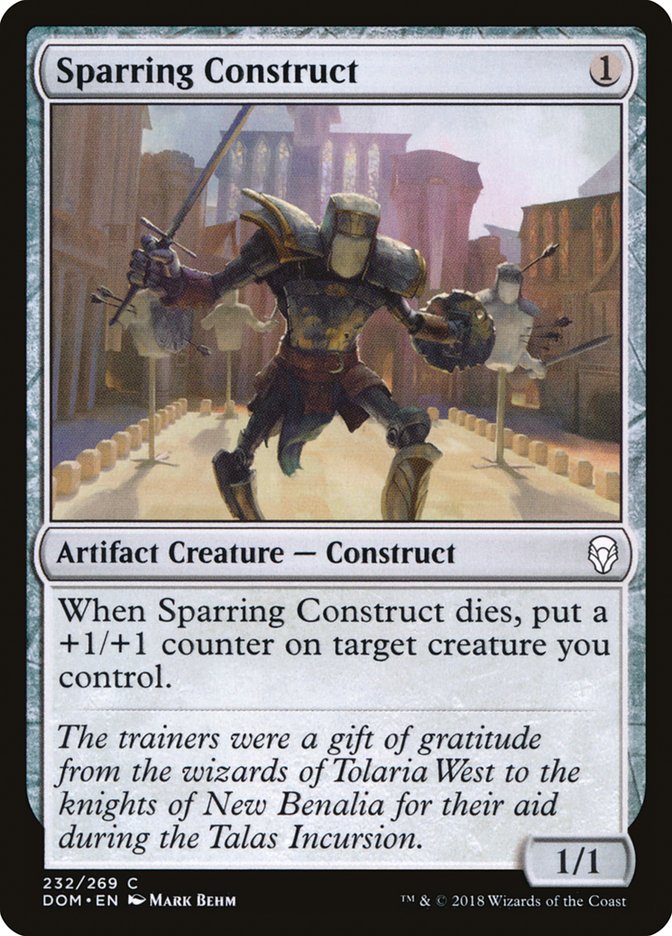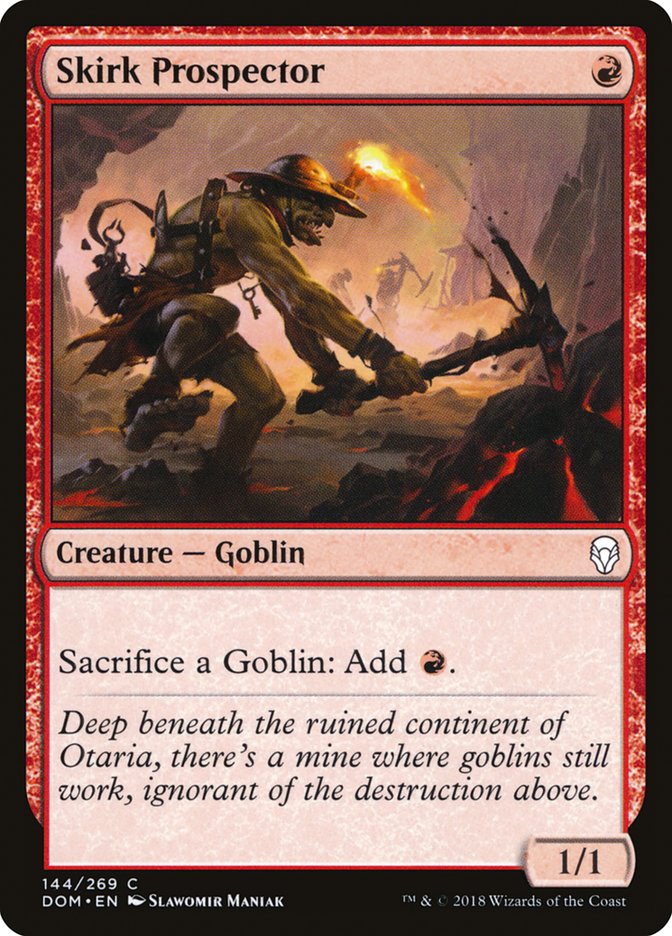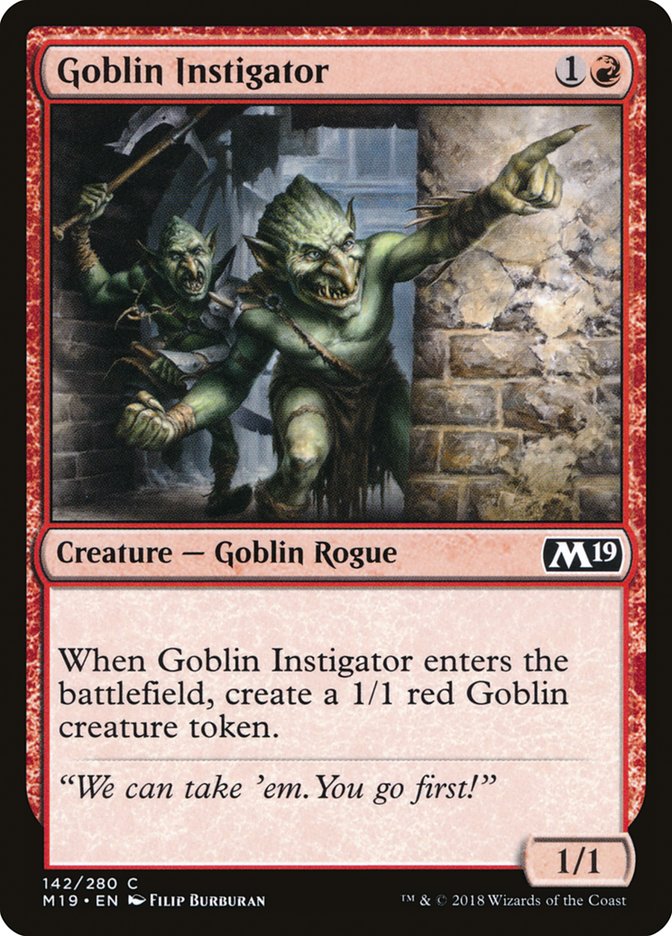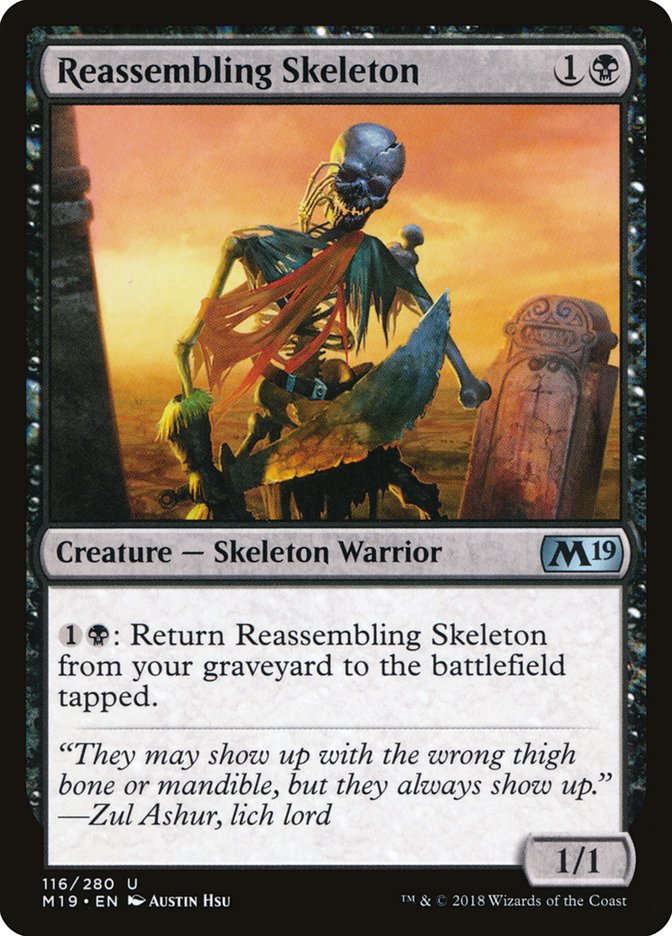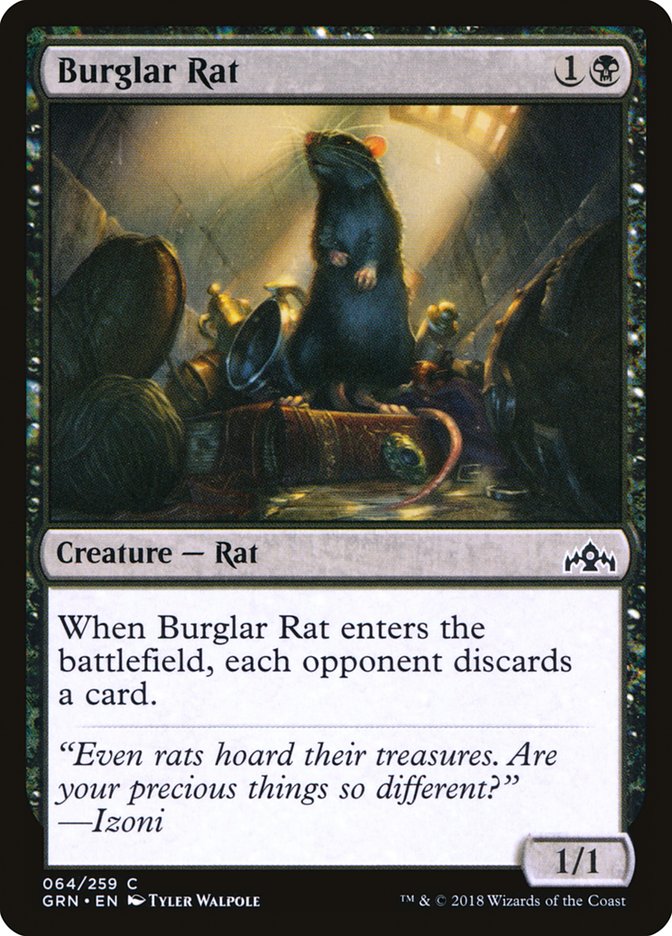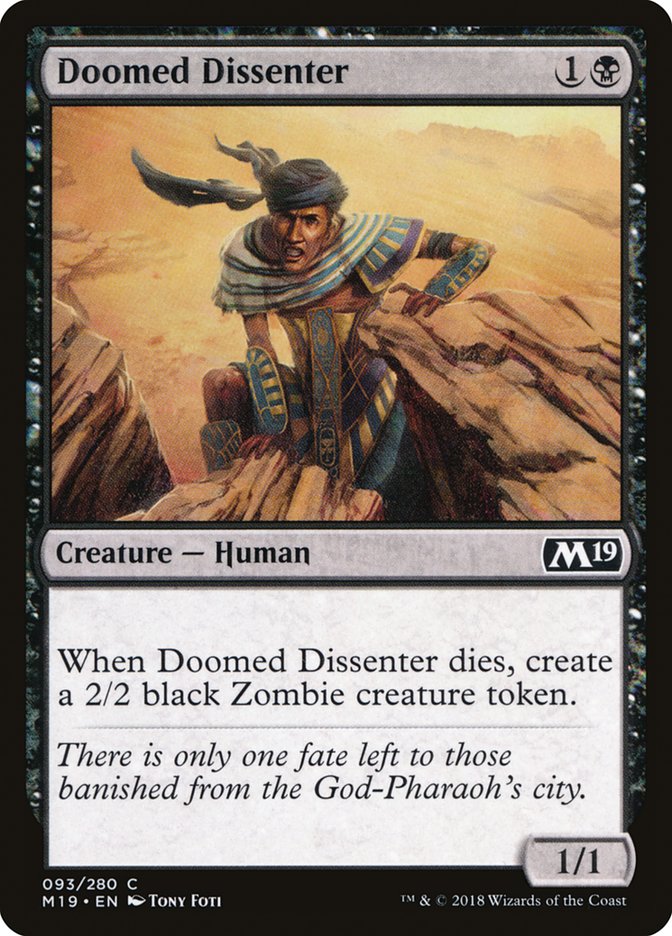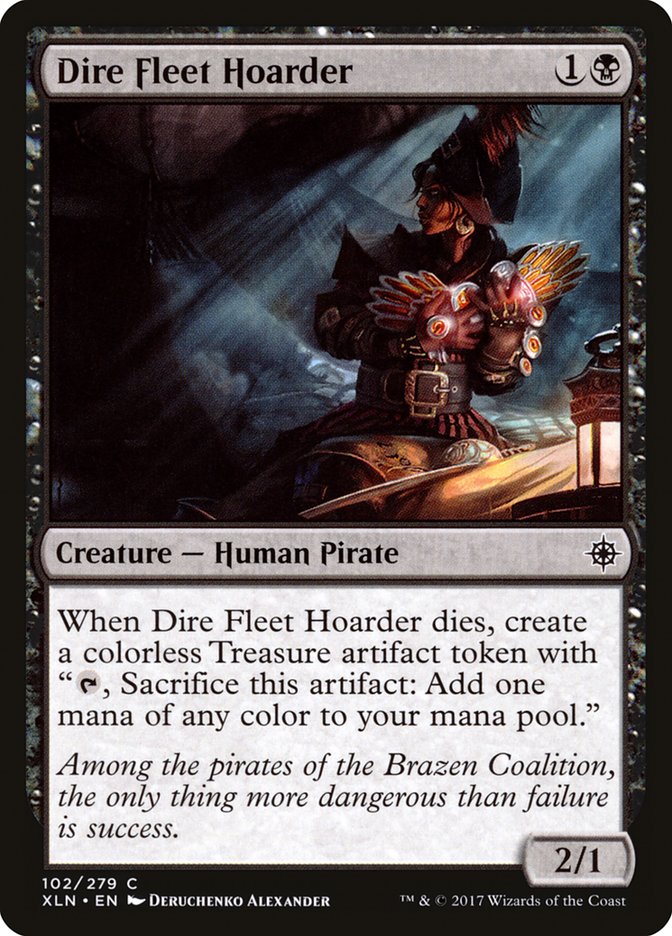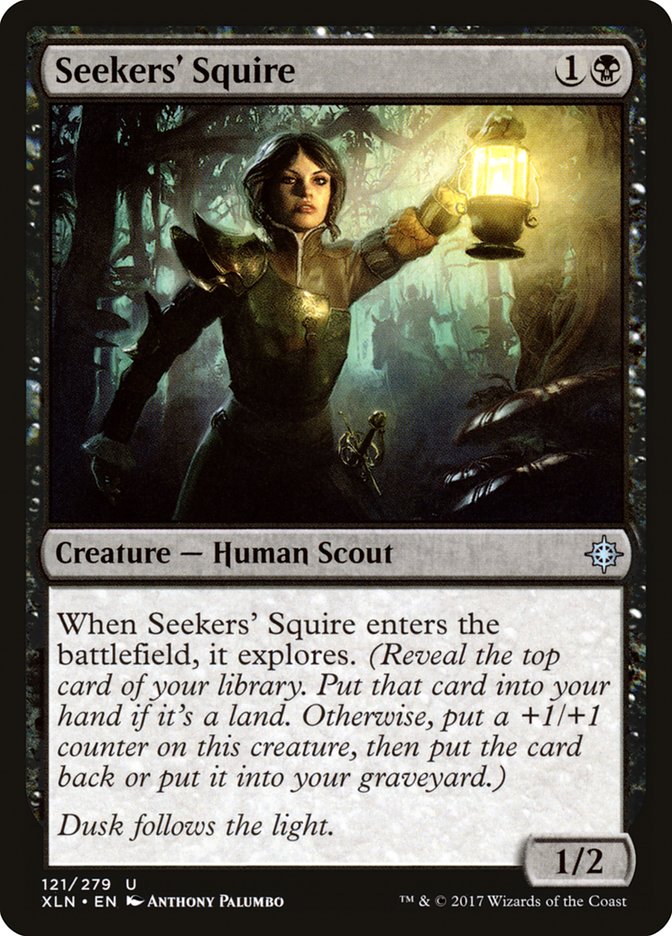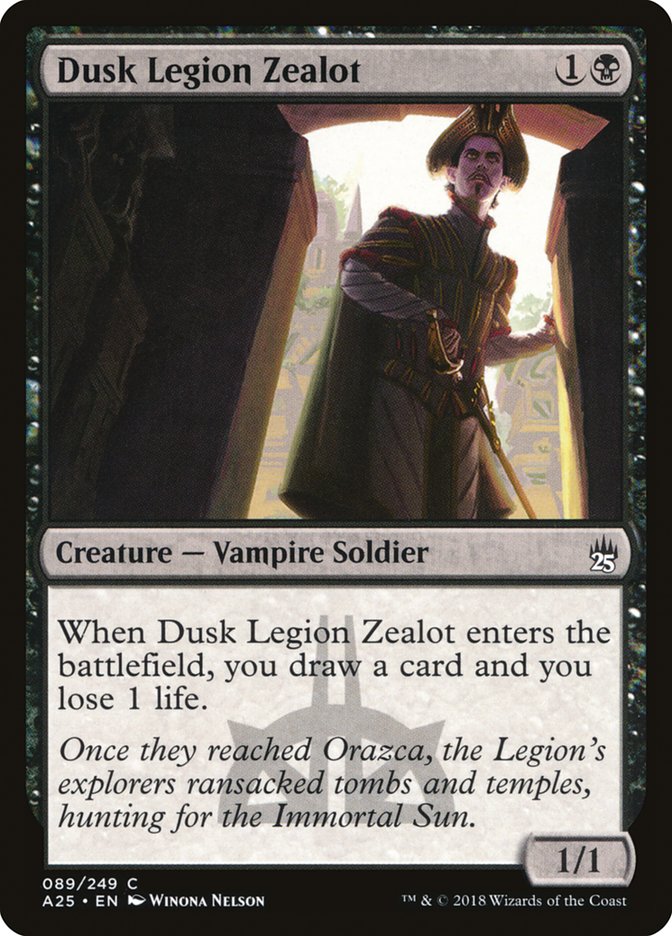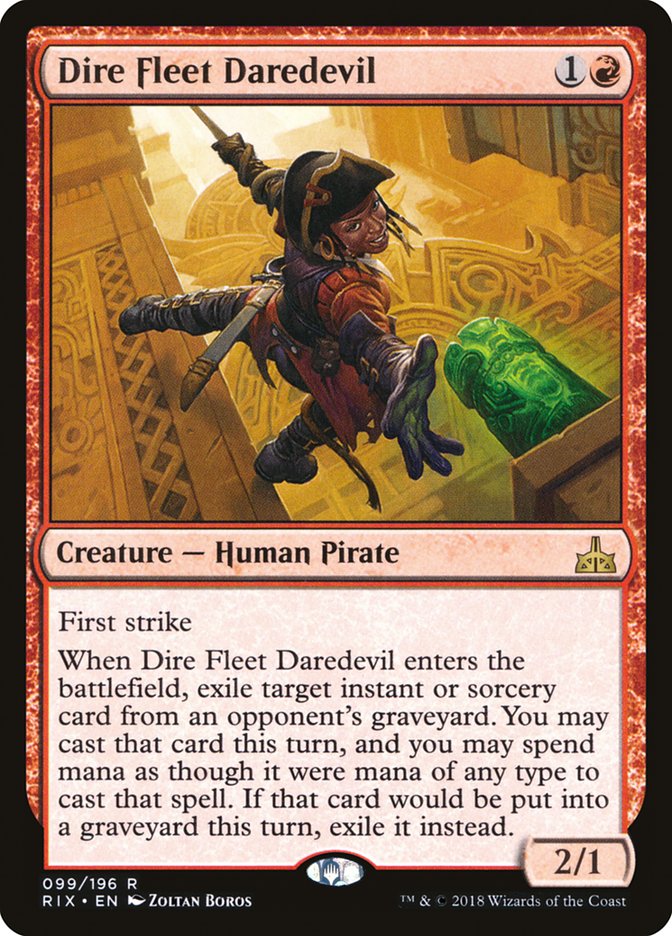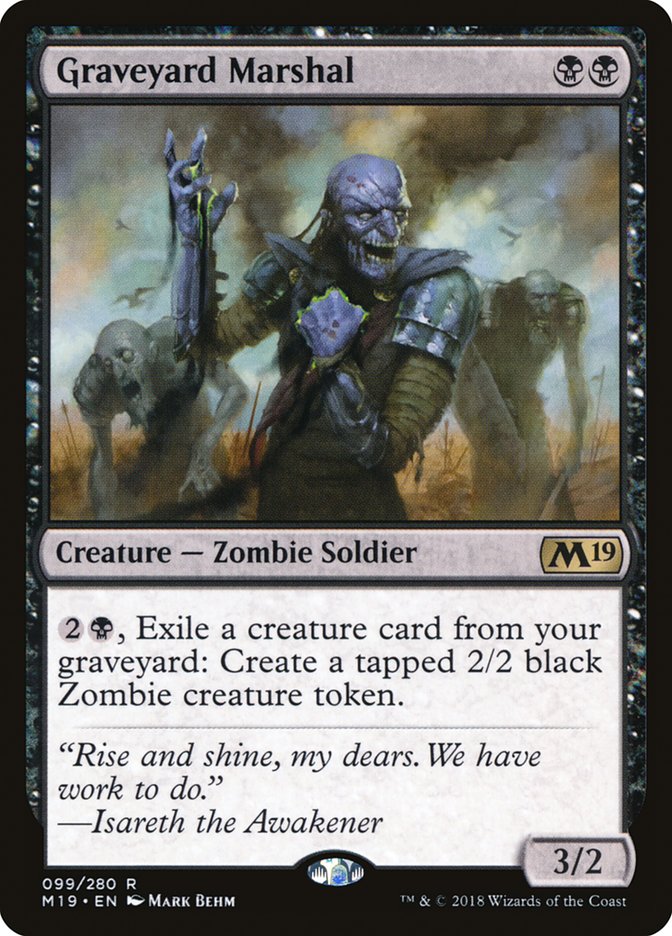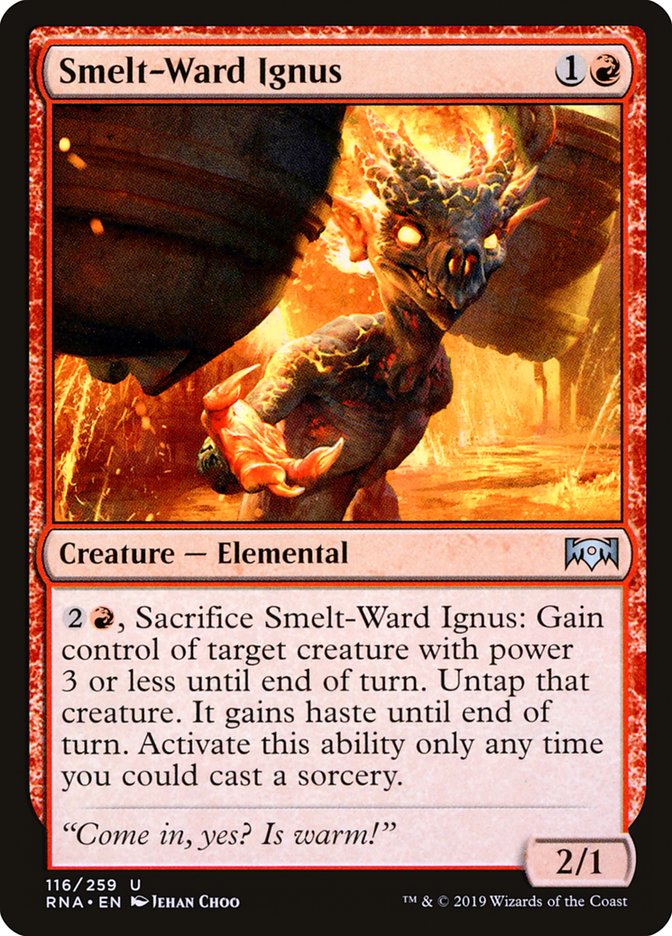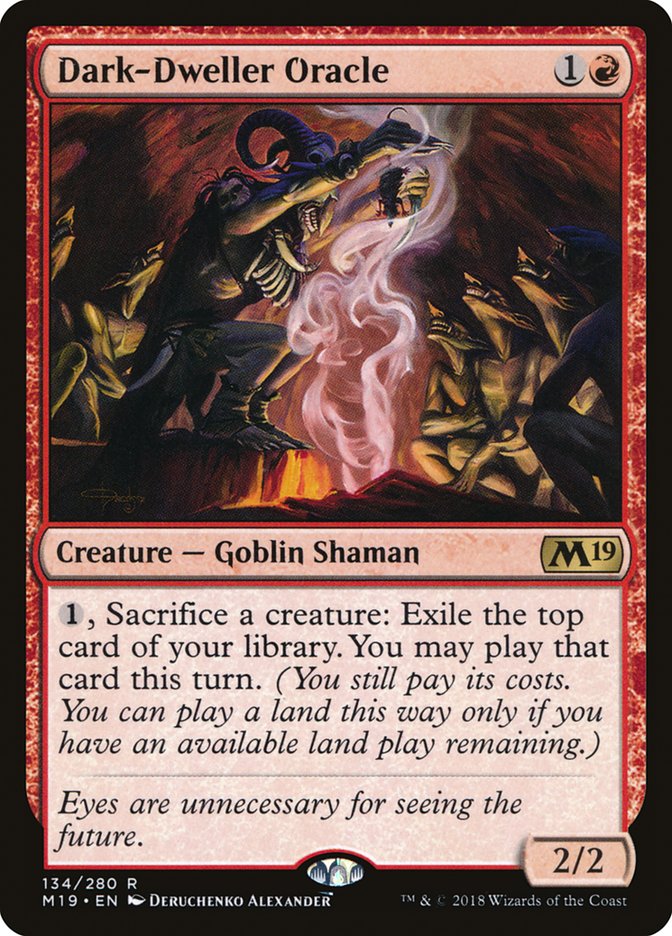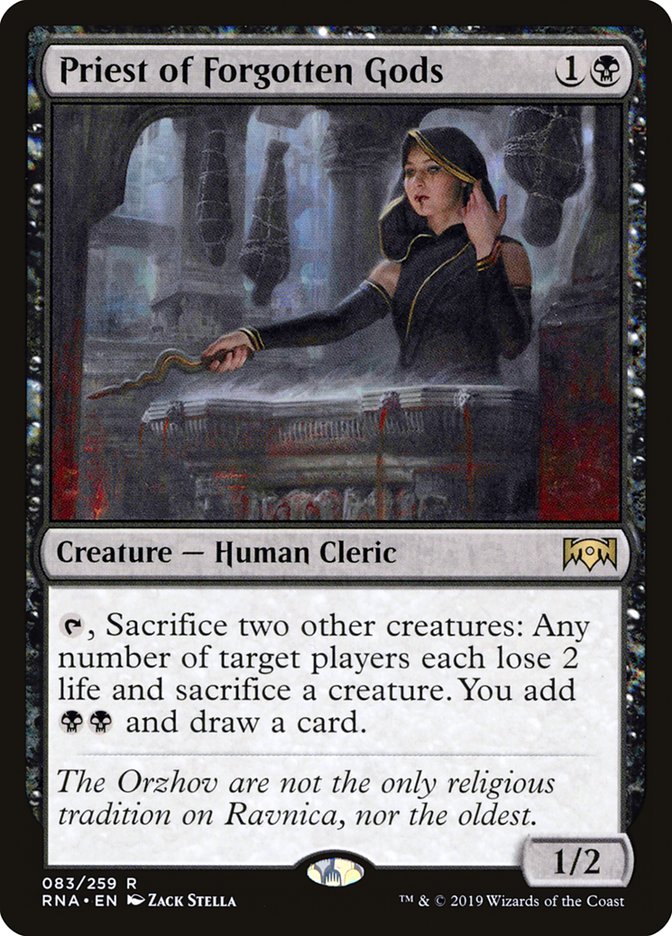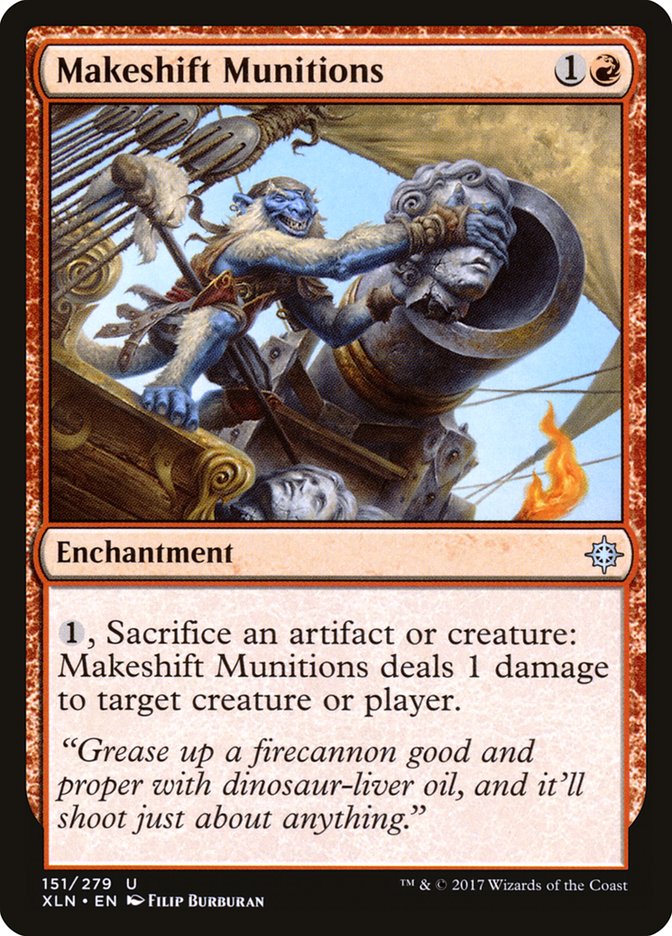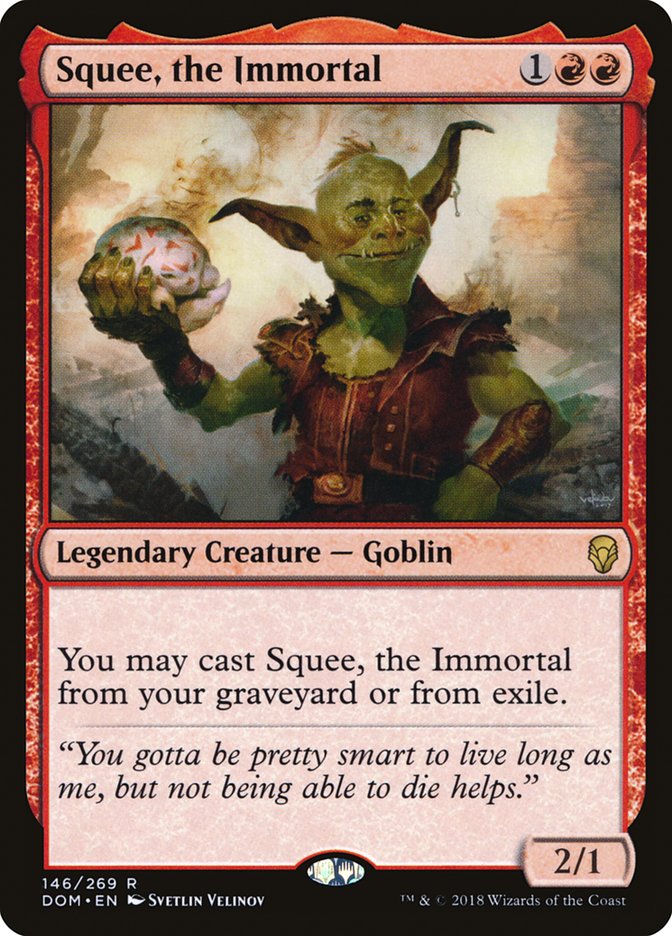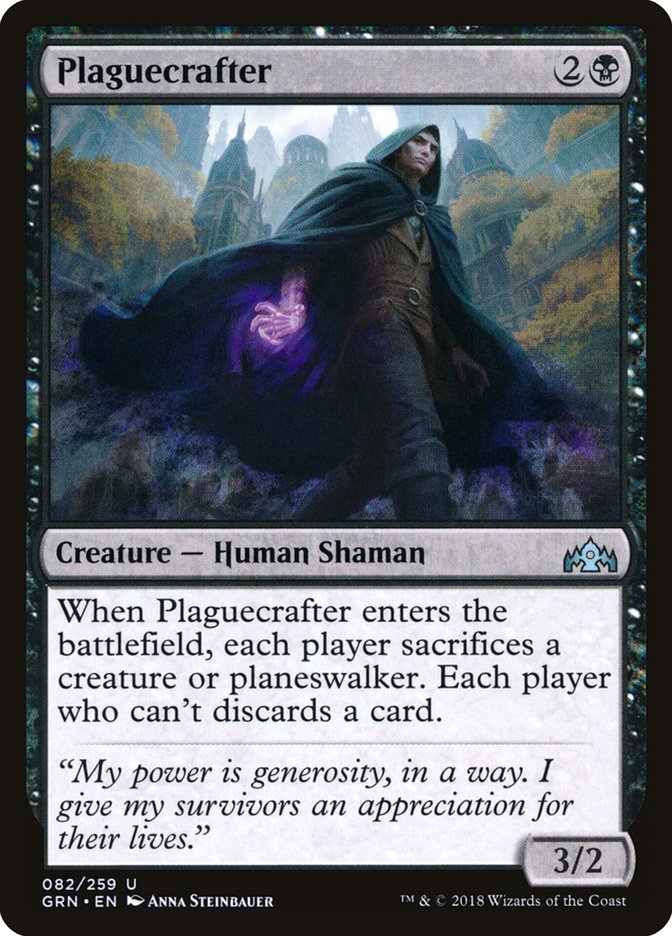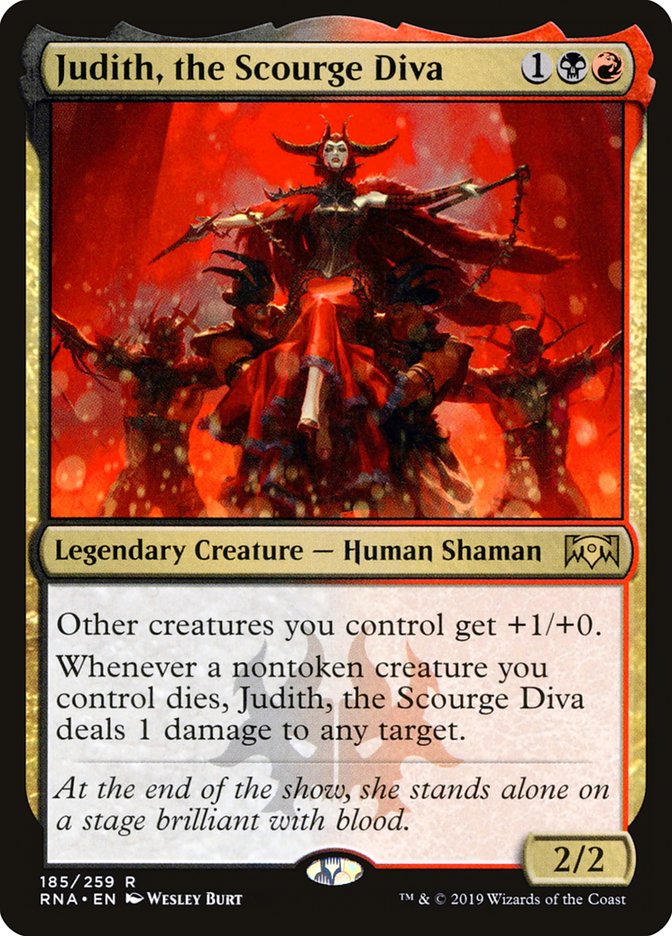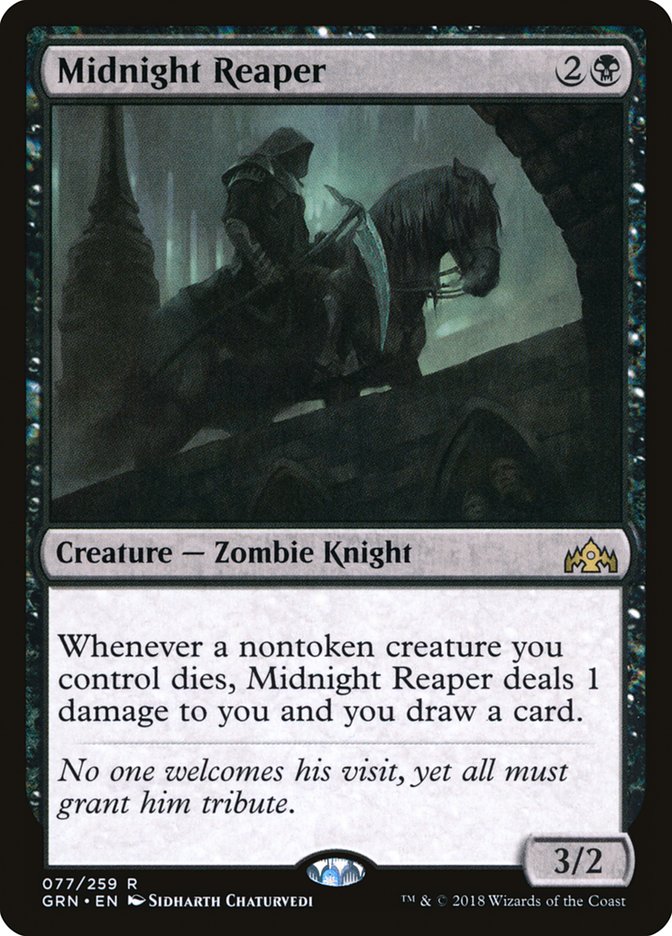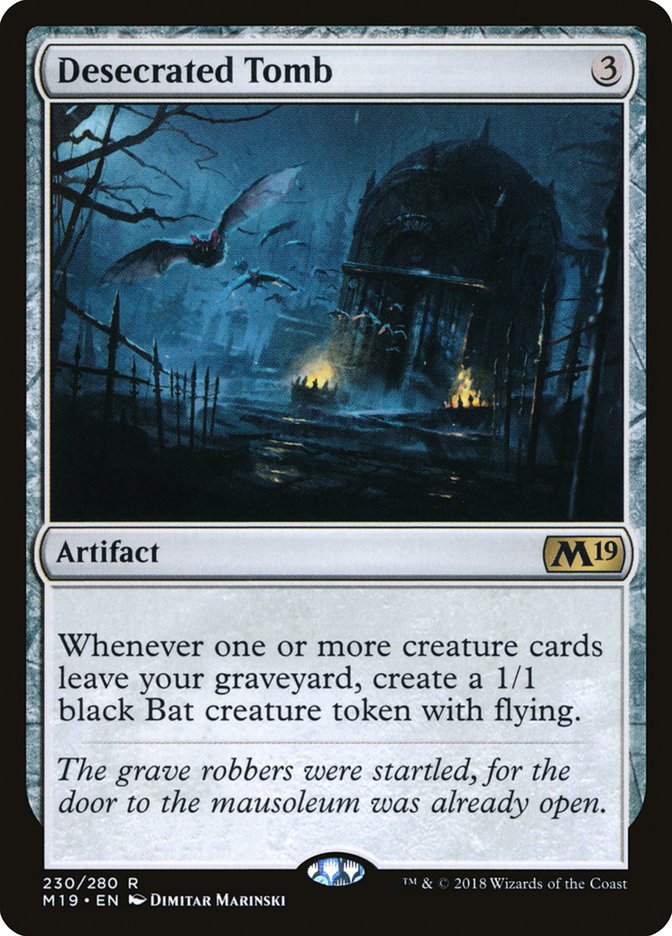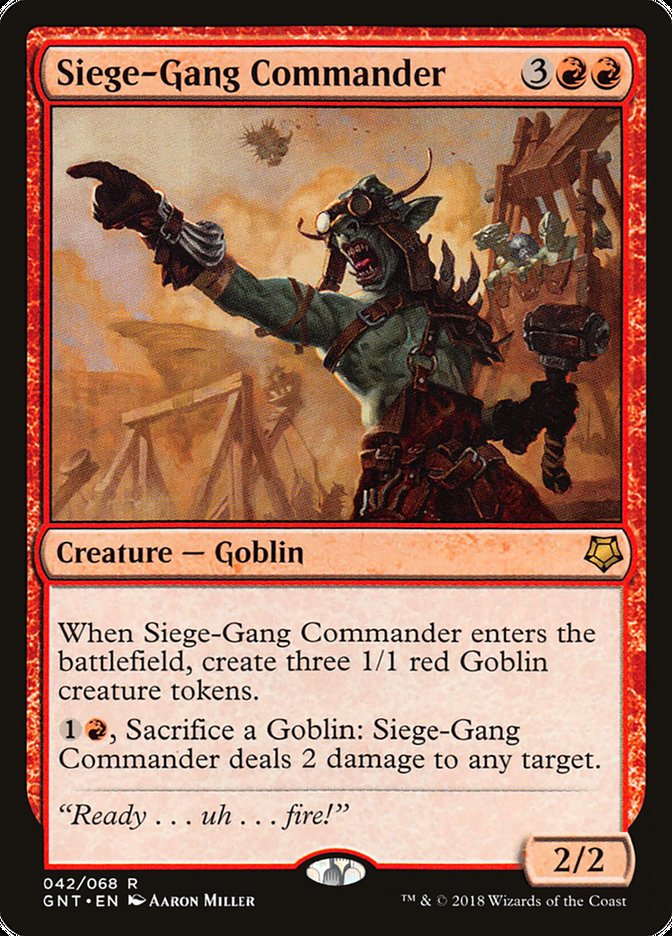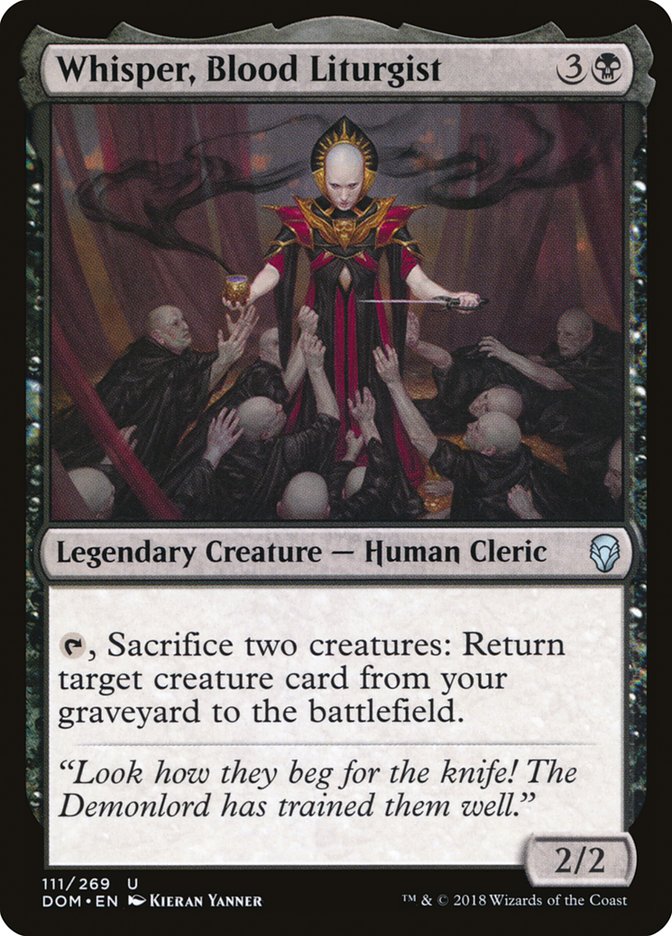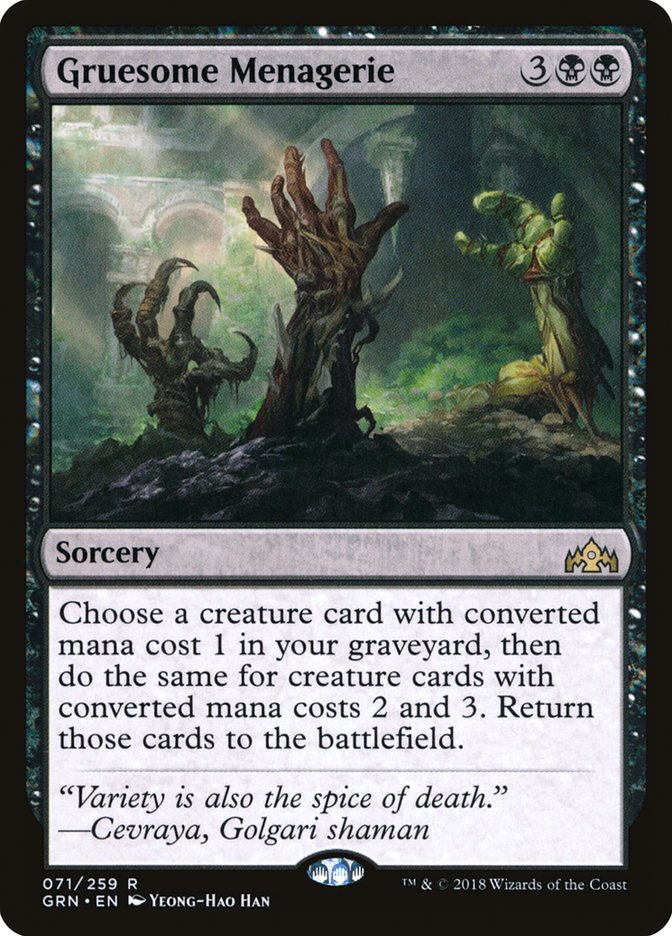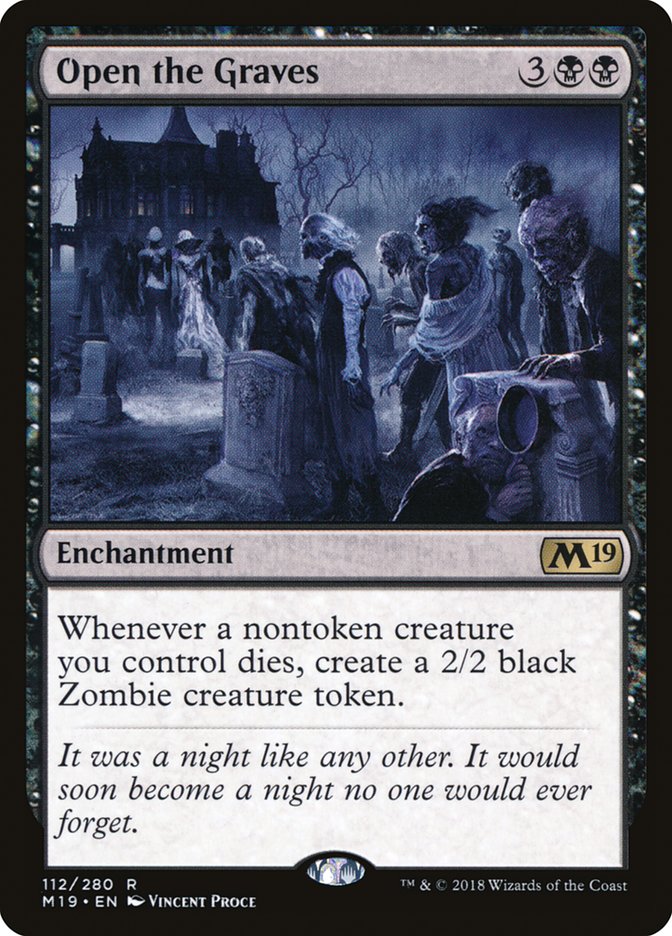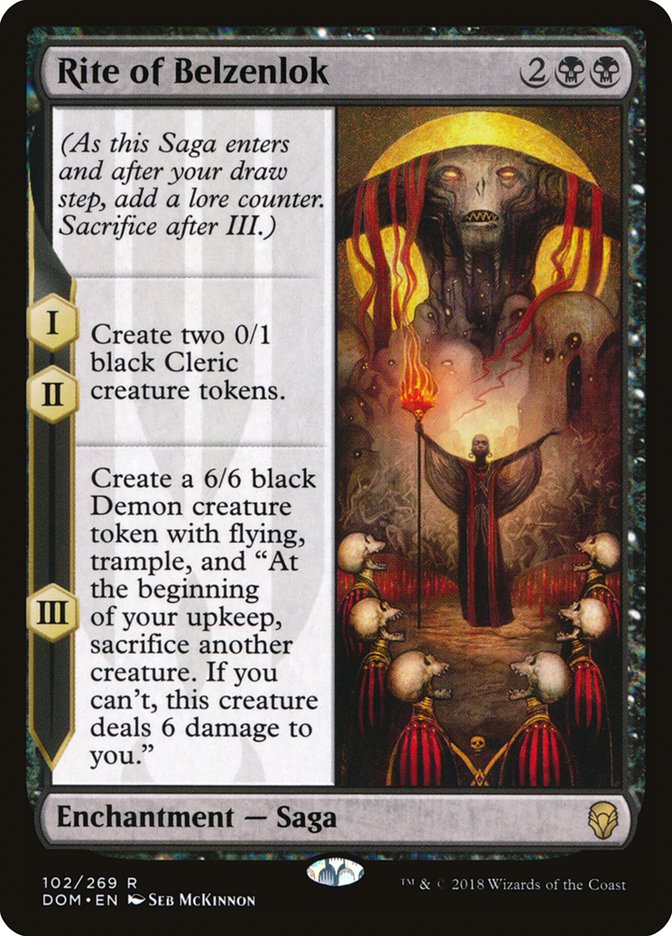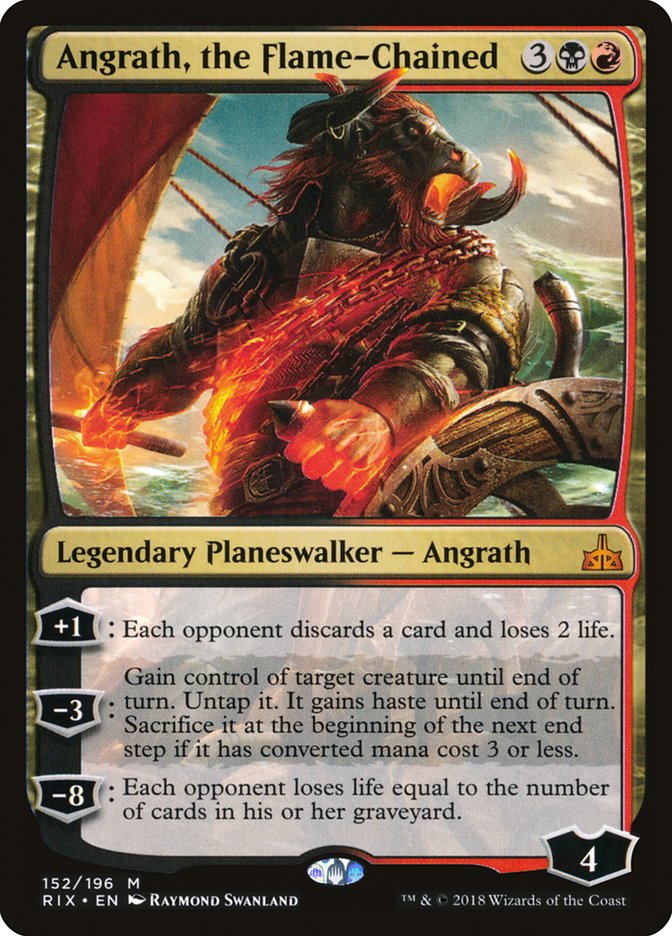There are a lot of possible ways to build Rakdos decks in Standard, and
they can be anywhere from very aggressive, very controlling, and anywhere
in the middle. They can focus on synergy, bombs, attrition, and any number
of engines. There’s really a lot more than I can fit in a single article,
but to capture some of that depth and flexibility, today I’m going to look
at a number of different ways of building creature decks in Rakdos.
The first option is to go very aggressive, but even that leaves a lot open
to interpretation. Here’s a take that’s very focused on the opponent’s life
total:
Creatures (25)
- 4 Fanatical Firebrand
- 1 Rakdos Firewheeler
- 4 Rix Maadi Reveler
- 4 Judith, the Scourge Diva
- 4 Gutterbones
- 4 Fireblade Artist
- 4 Orzhov Enforcer
Lands (23)
Spells (12)
Sideboard

This is a straightforward aggro deck, just creatures and burn spells. The
weirdest inclusion is Orzhov Enforcer, which might be kind of a pet card,
but I think it’s just fantastic in any deck with spectacle as well as just
a great card in the format. I think there are going to be a lot of huge
green creatures that deathtouch will line up really well against, and it’s
just a good rate for a value creature if you’re looking to sacrifice
things. I expect to include this in most of my Rakdos decks.
Fireblade Artist is a weird card to evaluate. It’s hard to do better than a
2/2 haste for two mana, but 2/2 haste for two mana clearly isn’t good
enough. This also happens to offer a good amount of reach, and I think
between synergy with Judith, Scourge Diva on top of having Gutterbones and
Orzhov Enforcer as easy creatures to sacrifice and valuing two damage very
highly, it checks enough boxes here, but I don’t think it’s a great card if
you’re less aggressive.
Rix Maadi Reveler, on the other hand, just seems hard to go wrong with. The
floor of a 2/2 for two that lets you rummage is pretty high, and the
ceiling on this is fantastic.
I’m not in love with Fanatical Firebrand, but I think it’s probably the
best one-drop available to us, particularly since it plays well with
Judith, the Scourge Diva and it can always enable spectacle in a pinch.
I’m also not sure about the right mix of Carnivals and Rakdos Firewheeler
or if those are even the right cards to be considering, compared to
something like playing Risk Factor or Theater of Horrors main.
The other big card that’s missing here is Spawn of Mayhem, but I want to go
a little leaner and focus more on incidental damage, where I see Spawn as
more of a card that’s trying to win the game on its own. I think Spawn of
Mayhem is best in a deck that’s interested in nickel and diming your
opponent and more interested in playing some more interactive cards like
Drill Bit and maybe Bedevil main.
I suppose we can look at that next:
Creatures (20)
Planeswalkers (2)
Lands (25)
Spells (13)

This kind of deck is trickier to balance. If I’m playing big fliers, I want
interaction so that I can play a long game and use the big fliers to trump
my opponent’s smaller creatures, but interaction and big fliers don’t leave
a lot of room for creatures that enable spectacle well, so I went with a
few of the creatures I think are best at that. This tension meant I
couldn’t use Drill Bit as well as I’d like, which lead to moving some to
the sideboard.
I suspect that someone else will build a midrange deck with a curve like
this that manages to find cards at a slightly higher power level to replace
some of the cheap creatures with, maybe giving up on some of the spectacle
synergies, which might mean losing Spawn of Mayhem, but the low synergy,
raw power level decks have always been the ones I’m worst at building, so
I’ll leave building a generic midrange deck to others who are better suited
to that task.
What I’m really interested in exploring are the more synergy-driven
sacrifice decks, and this might require a more thorough look before we get
to decklists, so let’s break it down:
One-Drops
There aren’t a lot of great options for one-drops, and while I think it
makes sense to look at more expensive creatures based on their function,
with one-mana creatures I’m really just looking to get material on the
battlefield to work with, so I think they’re best viewed among each other.
Here are the options as I see them:
The second power is a big deal here. It means it can attack into a lot of
creatures and your opponent won’t want to trade because of the recursion,
which means it’s particularly good at enabling spectacle. Since it also has
built in recursion, it’s likely to be a great fit for the kinds of decks
I’m looking at.
This is the other option I used in the aggressive Rakdos deck. It’s
relatively aggressive and it can sacrifice itself whenever you need to.
It’s a generically fine one-drop.
If you have enough other cards that are looking for you to sacrifice
creatures, this is like a Fanatical Firebrand that lets you have your cake
and eat it too. You can both get the one damage and get whatever effect you
were sacrificing it for, so the more outlets you have, the more likely you
are to want this over Fanatical Firebrand.
I love this option as a value one-drop, but you need to make sure you only
play it if the value you’re getting from it is meaningful. If we can find
enough graveyard synergies, this becomes a good option.
This is pretty similar to Footlight Fiend – a small creature that generates
incidental value when it dies that you’ll only want if you’re really
looking for things to sacrifice.
Most likely, you’ll only want this if you’re playing other Goblins, but
honestly, playing this as a bad Wild Cantor might not be out of the
question depending on what you’re trying to do.
At two mana, things get more interesting. On the one hand, we have
enablers; these are cards that are particularly good value for sacrificing:
Enablers
I’ve already talked about how I think this card is going to line up well in
the format. I think this is the best enabler.
Two creatures, like Orzhov Enforcer. You get them both up front, which can
be nice, but a 1/1 is a lot worse than a 1/2 deathtouch or a 1/1 flier. I
think this is generally going to be a lot worse if you don’t have other
Goblin synergies, though it’s possible to want both.
I’ve wanted this to be good enough since it was first printed. The rate is
usually just a little too bad, but I honestly wonder if we have good enough
payoffs for sacrificing things that this can actually make the cut.
Power level is super low here, but if you’re combining it with other
discard it might start to become a gameplan.
I see both of these as worse Orzhov Enforcers that do similar things. It’s
worth noting that you can have as much of this kind of thing as you’d want.
These are similar cards to Buglar Rat, but they make the game bigger where
Buglar Rat makes it smaller. That makes them better when you’re trying to
build large synergies, but worse when you’re trying to grind an opponent
down. Weirdly, this kind of deck can do either or both.
This is a relatively high-power level card that also happens to be a
two-mana value creature. The problem with it is that it doesn’t generate
value on turn 2, so this is more of a card that you can play a few of to
use late rather than a core cog in your machine.
This is largely a better Dire Fleet Daredevil – easier to get some value
off early and more reliable payoff late.
This isn’t my kind of enabler because it needs to live to do anything or
you need to wait until you have five mana to play it and use it
immediately, but this is a source of additional creatures.
This is another weird one. As with Graveyard Marshal, you need to find
three extra mana to get value out of this, but threaten effects are
fantastic if you have a lot of ways to sacrifice things, as this lets you
sacrifice your opponent’s creature. Probably not worth it, but somewhat
interesting.
Outlets
This is a Goblin and a relatively cheap sacrifice outlet. Mostly, this is a
mana sink.
As I discussed above, this is a good rate if and only if damage is the
output you’re looking for.
This is a fragile creature that’s horrible if you’re not activating it, so
you need to be absolutely committed to trying to build a battlefield where
you can almost always profitably activate this, but if you can, the payoff
is extremely enticing.
I really hate to have to spend mana for this, but it is an option.
Three Mana
Squee is very similar to Reassembling Skeleton but likely slightly worse.
A one-use outlet, this plays well with Buglar Rats and generally
encouraging a small game. Particularly great with Gruesome Menagerie and
obviously filling the outlet role.
This is a payoff and a good one.
This is the other great payoff; both reward you for assembling enablers and
outlets.
This is a bit of a stretch, but I could actually see it playing well with
Gutterbones and Reassembling Skeleton.
There are a lot of other great Rakdos spells that cost three mana, but
these are what I see as the most pertinent for a deck built around this
kind of engine.
Expensive Options
A great way to make a lot of creatures.
A four mana 2/2 that has to live to do anything is a hard sell, but
activating Whisper would be great.
This is great because it doesn’t require that you have a battlefield. If
your deck is full of a good mix of one, two, and three mana creatures and
you’re killing them sometimes, this should almost always be good.
This is harder to use when things are going badly. If your opponent is
answering your creatures as you play them, this won’t do anything, but if
you’re moving creatures between zones a lot, this can definitely get out of
hand.
This works well if you build your deck to take advantage of tokens rather
than mostly nontoken creatures, but it’s very good at making a lot of
tokens.
Angrath is a reasonably powerful card that gets even better when you can
sacrifice larger creatures that it steals.
Creatures (31)
- 3 Reassembling Skeleton
- 1 Dark-Dweller Oracle
- 4 Stitcher's Supplier
- 3 Midnight Reaper
- 2 Plaguecrafter
- 3 Rix Maadi Reveler
- 3 Judith, the Scourge Diva
- 4 Gutterbones
- 4 Priest of Forgotten Gods
- 4 Orzhov Enforcer
Lands (23)
Spells (6)

Another very similar take is to drop the red:
Creatures (27)
- 3 Reassembling Skeleton
- 4 Stitcher's Supplier
- 4 Midnight Reaper
- 4 Plaguecrafter
- 4 Gutterbones
- 4 Priest of Forgotten Gods
- 4 Orzhov Enforcer
Lands (23)
Spells (10)

I think I actually prefer the mono-black deck because of the strength of
Zhalfirin Void at assembling combos, but I could easily be wrong. The red
cards are all extremely powerful, especially, I suspect, Rix Maadi Reveler
and Theater of Horrors. I like that the black deck leans further into
Necrotic Wound, with Mausoleum Secrets that will often find Necrotic Wound
as a three-mana removal spell, but the red version could also make room for
more of this.
My concern with both decks is that the sacrifice outlets aren’t very
sticky. Cartel Aristocrat was perfect because it was so hard to remove,
which meant you’d always have something around to let you sacrifice
creatures when you wanted to. Priest of Forgotten Gods will always be the
first target for a removal spell, which can make it hard to get value out
of your enablers and payoffs, leaving you with a bunch of really low impact
threats. Plaguecrafter helps some with that, and that’s the reason I
included Dark-Dweller Oracle in the red version, but it remains a concern.
The other solution is to switch to white for additional outlets, since
Pitiless Pontiff might do a reasonable Cartel Aristocrat impression, but
that’s a topic for another time.


